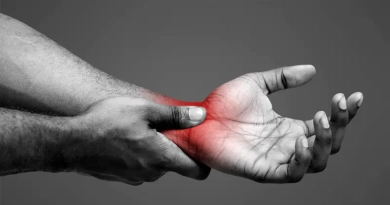
How can I prepare for a power outage?
Finding light in the dark
The wind had a certain chill that evening, one that whispered of an impending storm. As I sat by the window, the lights flickered—a precursor to the darkness that would soon envelop my home. It wasn’t the first time, and it wouldn’t be the last. Living in an area prone to severe weather, the question wasn’t just a matter of curiosity but of necessity: How can I prepare for a power outage?
The Importance of Being Prepared
A power outage can strike without warning, turning every modern convenience into a silent testament to our reliance on electricity. It’s not just about sitting in the dark; it’s about losing access to everything, from heating and cooking appliances to communication devices. The stakes are higher in severe weather conditions, where the loss of power can also mean the difference between safety and peril.
Exploring Options and Overcoming Obstacles
The unpredictability and varied duration of power outages pose a unique challenge. Preparing for a blackout that could last just a few hours is vastly different from bracing for one that might stretch over several weeks. Here’s a deeper look into some key methods for preparing and their inherent challenges:
Lighting Solutions
The most immediate concern during a power outage is often lighting. Flashlights and candles are the first line of defense against the darkness. Flashlights, particularly those dependent on batteries, can provide a safe, controlled light source, but they have their limitations. They require a stockpile of appropriate batteries, and in extended outages, even a large stock can dwindle. Candles, while offering a longer-lasting solution, carry significant risks of fire, especially in homes with pets or small children. Moreover, they provide minimal light, which may not be adequate for practical needs like cooking or reading.
Food and Water Supply
Keeping a sufficient supply of non-perishable food and water is crucial. The rule of thumb is to have at least a three-day supply of water—one gallon per person per day—and a similar stock of non-perishable food items. The challenge lies not only in accumulating this stock but also in managing it without spoilage and ensuring it’s replenished before items expire. This requires regular review and rotation of supplies, which can be cumbersome and easily overlooked during routine daily life.
Heating and Cooling
Maintaining a comfortable and safe home temperature without electricity is a significant hurdle, especially under extreme weather conditions. In cold weather, the lack of heating can quickly become dangerous. Solutions like propane heaters can provide warmth but must be used with caution to avoid risks of carbon monoxide poisoning, necessitating adequate ventilation, which can be hard to balance with keeping the heat in. During hot weather, the absence of air conditioning can make indoor temperatures uncomfortable or even hazardous. Battery-powered fans can help, but they won’t cool a room as effectively as air conditioning, and running them continuously can drain batteries quickly.
Communication
Staying connected with the outside world and emergency services is crucial. As phones, tablets, and computers run out of battery, maintaining communication lines becomes challenging. Traditional methods like landline phones that do not require power are rare, and mobile networks can be unreliable or overwhelmed during widespread outages.
Implementing the Best Solution
Based on these challenges, here is how I approach building a comprehensive emergency kit and planning for power outages:
Comprehensive Emergency Kit
- Lighting: I invest in high-quality rechargeable LED flashlights and lanterns. I complement these with solar-powered lights and ensure I have a reliable stock of batteries and a solar charger.
- Water and Food: I maintain a rotating stock of non-perishable foods and ensure I have manual tools like a can opener. My water supply is refreshed every six months to prevent stagnation.
- Heating and Cooling: I keep thermal blankets and insulated clothing for cold weather. For heat management, I use propane heaters with caution, ensuring the space is well-ventilated. In warm weather, battery-operated fans and methods to shade windows and insulate rooms help keep temperatures down.
- Communication Tools: A hand-crank or battery-powered radio is essential for updates. I also keep a power bank fully charged and ready to keeping mobile devices running.
Plan for Medical Needs
- Keeping an updated supply of essential medications is crucial, and for those reliant on powered medical devices, I recommend having a backup power source like a generator.
Home Preparedness
- I install surge protectors to safeguard electronics against sudden surges when power returns.
- I familiarize myself with the manual override for my electric garage door to ensure access even during an outage.
- My generator is regularly maintained, and I never operate it indoors to avoid the risk of carbon monoxide poisoning.
These preparations are not merely about enduring a power outage but managing it with resilience and safety. This approach ensures that each aspect of life, from basic comforts to critical needs, is addressed, enabling me and my family to withstand the challenges posed by extended periods without power.
Tools and Resources
To effectively implement this strategy, here’s what you might need:
- LED flashlights and lanterns
- Solar chargers and power banks
- Non-perishable food supplies
- Battery-powered or hand-crank radio
- First aid kit
- Generator (if feasible)
Ready for the Dark
As the storm outside grew wilder and the room dimmed, the preparation gave me not just light but also confidence. Being ready for a power outage means more than just surviving; it’s about maintaining a semblance of normalcy in abnormal times. With a well-thought-out plan and the right tools at your disposal, the darkness becomes less daunting and the silence less oppressive. Preparing might seem like a chore, but when the lights inevitably go out, it feels nothing short of a salvation.






